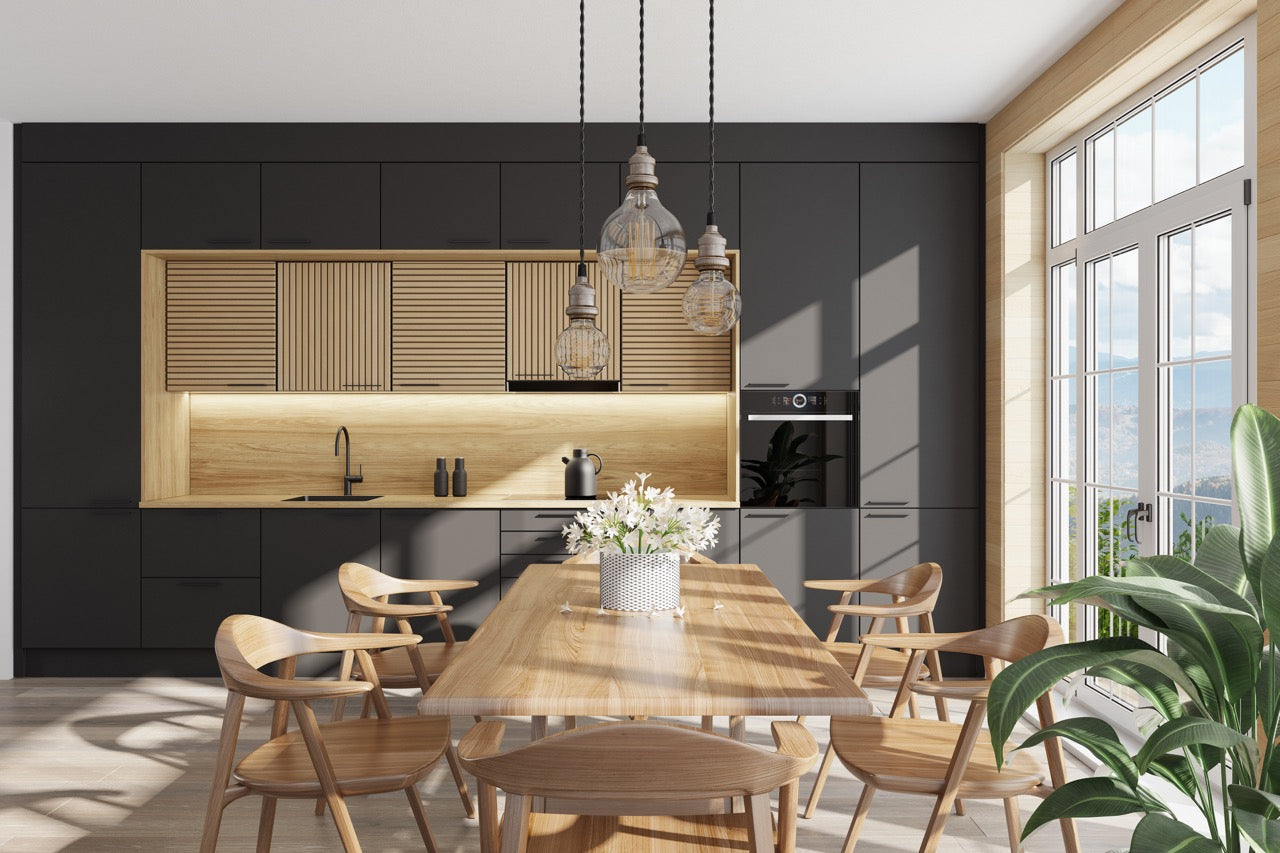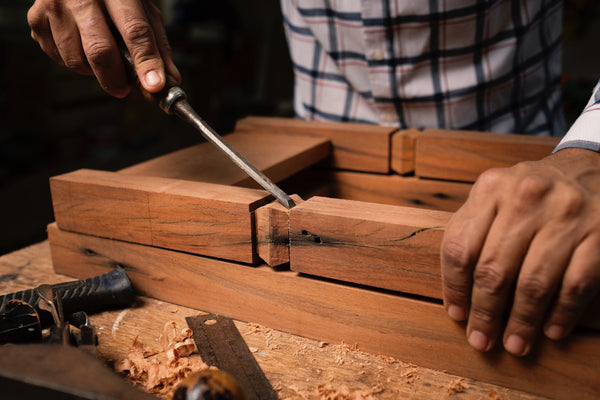17 Foundational principals in Kitchen design

It’s been said that life is made in the bedroom but is lived in the kitchen. The kitchen is the heart of the home and it is the place where day-to-day family life is directed. The kitchen is the place where people tend to have their best conversations and their most thoughtful engagements. It is also repeatedly stated as the most important room in the house by realtors. How kitchens are designed or renovated can have a huge effect on the resale value of a home. Due to the heavy measure of importance carried in the kitchen, it can be intimidating to build or remodel one. Below we have compiled a list of 17 different foundational principals to help you in your kitchen design and planning.
Principals of Kitchen Design and Planning
- Take exact measurements of space before you start designing - This step can be overlooked by first time kitchen designers or remodelers, but it is the foundation that you draw the rest of your plans on. The more informed you are in the planning phase, the better results you will have in your kitchen build or remodel.

-
Create a working triangle - A working triangle is the main design principal that kitchens are planned with today. It takes the three most used points of the kitchen; the fridge, stovetop, and sink, and develops the layout of the kitchen around them. These three elements need to be close together to eliminate useless movement, but far enough away from one another that there is still some space between them to prep food and do cleanup. When planned well, the working triangle is the backbone of an efficient kitchen. When planned poorly, your kitchen will become inefficient and enjoyable to use. The rules of the working triangle are as follows.
- Sum of distances needs to be 27ft or less
- Each leg of the triangle needs to be between 4-9ft.

- Choose appliances before laying out cabinets - It is easier to choose the appliances first and then build the cabinets around them than it is to build the cabinets and then try and find appliances that fit. When designing your kitchen, choose your appliances first.

- Plan electrical needs - Plan your outlets for your appliances and for your countertops. There are few things more annoying in a kitchen than not having an outlet where you need them.

- Plan for your actual lifestyle - Be sure to design and execute a design plan that is actually in line with your lifestyle. For instance, if you are a big entertainer and love hosting guests, make sure to prioritize seating solutions in your kitchen. When you design your kitchen around your lifestyle and it will be a joy to operate in.

-
Doorways and walkways - Often people won’t notice the practical ways kitchen doors and walkways are designed, but it is very noticeable when something is wrong. When building a kitchen build your walkways and doorways to standardized sizes.
- Doorways need to be at least 32in wide
- If a kitchen door swings inward (which they often do) Make sure that your door doesn’t interfere with opening cabinets or appliances. If you are working in a small kitchen and the door swings into your useable space, consider reorienting your door so it swings the other way.
- Walkways in the kitchen with primarily one cook need to be at least 42” wide

- When planning for pantry take a realistic look at your space needs - This is true for both cabinet and pantry storage, but this oversight happens more often with the pantry. When planning your pantry, take an inventory of all the food that you keep in your house and design accordingly.

-
Considerations for kitchens with multiple cooks - When planning a kitchen from scratch or doing a remodel, it is important to plan for how many cooks will be in the kitchen. If cooking is a partnered activity in your home, some of the spacing principles will change in order to accommodate the extra traffic.
- Passageways for kitchens with two or more cooks need to be 48” wide
- Each cook needs an individual working triangle. They can share a leg, but that is all.

Principals of a kitchens built-in elements
-
Cabinets - Plan your cabinets around the needs of the kitchen. Near the stove should be some storage for pots and pans. Near the food prep area, be sure there is some space for trash disposal either inside or beside the cabinets. All cabinets, including custom cabinets, need to adhere to standardized depth and height dimensions as appliances are usually standardized in those dimensions.
- Base cabinets 32” tall by 24” deep
- Upper Cabinets 32” tall by 12” deep
- For small kitchens designers recommend 117 square feet of shelf and drawer space inside cabinets
- For larger kitchens at 350 square feet and above, the square footage recommendation for shelf and drawer space is 167 square feet.

-
Seating - Islands and peninsulas contribute extra space in the kitchen for seating. This is a desirable feature in any kitchen, but the effect is lost when too much seating is crammed into a space. Standard sizes and spacing should be adhered to when planning for seating so that the spacious and advantageous feel of the extra seating is maintained.
- Smaller stools need at least 6” between each stools and island/peninsula structure
- Bar chairs or wider stools need at least 10” between the chairs/stools and the Island/peninsula structure.
- 15” leg room for counter height surfaces
- 12” leg room for bar height surfaces
- Chairs with no passageway behind them need 36”
- Chairs with a walkway behind them need at minimum 44” of space behind them

-
Counter space - Nothing is more frustrating in a kitchen than having too little, or poorly laid out counterspace. To avoid this disappointment, follow these general design principles for your counter layout.
- At minimum you should have 158 linear inches of countertop space.
- 24” of counter space on side of sink for prep work, 18” on other side
- 15” counter space beside the fridge, it opens in one direction (as opposed to French style doors), counter preferably goes on the handle side
- 12” of counter space on side of stove for cooling space, 18” on the other for prep
- If stove is installed in Island, be sure to have at least 9” on either side

- Cabinet Countertop heights - Outside of exceptional circumstances where the homeowner is quite a bit taller or shorter than the average American, keep countertops at 36”. Deviations from this rule can hurt the homes resale value.

- When to install an Island - Islands can provide storage space, counter space, and seating, so they are a good option for any kitchen that has the space to host them. If planned well, they can make the working triangle more efficient and house a trash receptacle, sink, dishwasher, cooktop, oven, or even a combination of these. However, an island is not a good design element for every kitchen. If a kitchen does not have the space to lend an island, it is better without one as an island would make the space feel more cluttered and thus less efficient. If you really want an island, but have a smaller kitchen, consider getting a rolling cart

- Peninsulas - Like islands, peninsulas give an extra run of seating, storage, or counterspace. However, where a peninsula differs from an island is that it is attached to an already existing cabinet or wall. Peninsulas are a great option for increasing the useable space in of a kitchen without building an island or increasing your kitchen size.

Building Principles for Kitchen Appliances
-
Fridge - The fridge is the biggest and most used appliance in the kitchen. Because of this, good kitchen design requires some specials rules and considerations.
- When looking at the working triangle, the fridge should be the point closest to the kitchen entryway for ease of stocking groceries
- 42” of space needed in front of fridge to make space for the opening and closing of the door(s), and for loading groceries.
- Fridge needs 15” of open space above it to vent heat

-
Stove - Like fridges, stoves come with their own design considerations. The biggest consideration for the stove revolves around the ventilation hood. Be sure to get a hood that matches your needs as they can vary from home to home depending on how often the homeowner cooks and what kind of food they make most often.
- Vent should be installed 30” above stovetop
- Have a fire extinguisher close at hand rated for Class-B fires and follow the maintenance schedule given by the manufacture. Hopefully you won’t ever have to use it, but its good to have around just in case.

-
Dishwasher - Dishwashers are great tools for keeping a clean and efficient kitchen. Like the other major appliances, planning for them requires some special considerations.
- Dishwashers should not be more than 36 inches away from the sink
- When the dishwasher is open there needs to be at least 21 inches between it and any adjacent surfaces.

Bonus Design Principal
- Don’t overspend on things that you don’t see - In new construction homes, kitchens are the most expensive room to build and furnish, but the investment is worth it as they also provide the most resale value of any room of a home. When it comes time to update and remodel the industry standard cost for kitchen remodels is 10% of the value of the home. This means that if your home is $750,000, you should feel comfortable spending $75,000 on your remodel. With such high expenses, put your money into things that are seen in your kitchen, not the things that are hidden. With that in mind, your money will go a lot further.

Barnes, Kathy, and Jessica Bennett. “Fundamental Kitchen Design Guidelines to Know Before You Remodel.” Better Homes & Gardens , 12 Nov. 2020, https://www.bhg.com/kitchen/remodeling/planning/kitchen-design-guidelines/. Accessed 24 Aug. 2022.
Khuu, Julie. “Common Design Mistakes | Kitchen Design Mistakes and How to Fix Them | Julie Khuu.” YouTube, YouTube, 20 Oct. 2020, https://www.youtube.com/watch?v=KOZMAq-zVaU.
Scherer, G. William. The Step-by-Step Guide to Designing, Building, and Installing Home Custom Cabinets. Prentice Hall, 1990.
Leave a comment
Comments will be approved before showing up.
Also in The Open Door Blog

23 Things I Wish I Would Have Known as an Amateur Woodworker
Woodworking is a rewarding hobby, but it is not without its difficulties. We at Open Door Furniture have compiled a list of 23 things you need to know if you're just beginning your journey in woodworking. We hope that you can learn from some of our (and many others) early mistakes and flourish in your own ambitions as woodworkers.

The 2 Distinct Styles of Custom Walnut Furniture








Kyle Lindstrom
Author